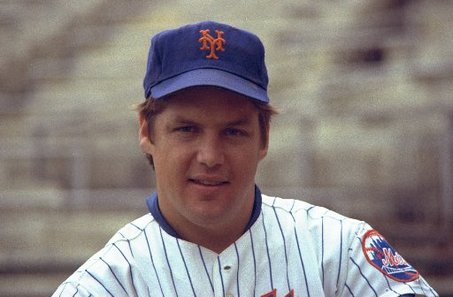There are certain dates in our nation’s history when Americans remember exactly where they were and what they were doing. One day that stands out for Mets fans is June 15, 1977. That is a day in our history which will live in infamy.
Tom Seaver, the face of the franchise, the heart and soul of the franchise, The Franchise, was traded away–no, was discarded–by the team he loved.
No player in the history of the Mets had single-handedly left such a void upon his departure. When Tom Terrific was traded, the short term effect was felt immediately. The long lasting effects would continue nearly a decade. For the 8 year period from 1969-1976, the Mets averaged 84 wins per year. In the 6 years that followed (leaving out the strike shortened season of 81), the Mets averaged just 65 wins. From 69-76, the Mets finished 1st twice, 3rd five times and 5th only once. After the trade, we finished last 5 times and 5th once. The average attendance at Shea from 69-76 was 25,002. The average attendance at what came to be known as Grant’s Tomb dropped to 13,401. Or to put it another way, there were roughly 42,000 empty seats every game at Shea. (the current seating capacity of Citi Field).
There is no need to go over Seaver’s stats. We all know of his 3 Cy Young Awards, his Rookie of the Year award, his 9 All-Star Games while wearing the blue and orange, his 9 straight years of recording 200 K’s or more. And so on…There have been close to 900 players who’ve donned the Mets uniform and only one has been deemed worthy of having his number retired.
Seaver meant more to the Mets than just wins and strikeouts. Prior to his arrival, the Mets were a laughing stock, the proverbial doormat for the National League. With the arrival of #41, the Mets gained credibility. At least every 5th day, we had a pretty good chance to win. He was the Mets first superstar. Long before David Wright was ‘the face of the Mets,’ that honor belonged to ‘Tom Terrific.’ After opposing Seaver in the 73 World Series, Reggie Jackson said, “Blind people come to the park just to listen to him pitch.” He was not just the best Mets pitcher. He was arguably the top pitcher in baseball in the latter half of the 20th century.
Whenever Seaver strolled to the mound, the game took on a different feel. You just knew you were witnessing greatness. You were experiencing something unique, something you could tell your grandchildren about.
In addition to the impressive stats, Seaver was a class act. An all-around good guy. As impressive as he was on the mound, he displayed elegance and distinction off the mound. Teammate Cleon Jones said of Seaver, “Tom does everything well. He’s the kind of man you want your kids to grow up to be like. He’s a studious player, a loyal cat, trustworthy.”
 On June 15, 1977, Mets fans were devastated when Tom was traded to the Cincinnati Reds. Heartbroken. Grown men cried. It was the loss of innocence for many and served as a stark reminder that when all was said and done, Baseball was a business. Not a game. There was no ESPN at the time. There was no 24 hour news. America had to learn what was going on in the world in a 30 minute nightly newscast by Walter Cronkite or David Brinkley. But yet, the news of Seaver being traded was worthy of news coverage on the three national networks. It came to be known as ‘The Midnight Massacre.’
On June 15, 1977, Mets fans were devastated when Tom was traded to the Cincinnati Reds. Heartbroken. Grown men cried. It was the loss of innocence for many and served as a stark reminder that when all was said and done, Baseball was a business. Not a game. There was no ESPN at the time. There was no 24 hour news. America had to learn what was going on in the world in a 30 minute nightly newscast by Walter Cronkite or David Brinkley. But yet, the news of Seaver being traded was worthy of news coverage on the three national networks. It came to be known as ‘The Midnight Massacre.’
Baseball was very different in 1977. A controversial new concept called “Free Agency” was in its infancy. The Mets original owner, Joan Payson, had recently died and the club fell under the control of GM M. Donald Grant. A businessman and strict disciplinarian, Grant was more concerned with Wall Street than Baseball. Slowly, the core of the Mets, players like Cleon Jones, Tug McGraw and Rusty Staub, were being sent away. It was on this day in June when the foundation crumbled and the unimaginable happened.
Seaver was perturbed by management’s reluctance to enter the free agent market and their lack of willingness to improve the team. He also wanted to renegotiate his own contract. Although he was the top pitcher in the game, he was paid less than many of his colleagues with less talent. Some favored his request but others, old school Baseball people, scoffed at the way a player would have the nerve to ask for a higher salary. Grant refused to budge, accusing Seaver of ‘being motivated by money.’ Seaver refused to budge. The clock was ticking.
Dick Young was a well known and extremely controversial sportswriter for The Daily News. During the 1961 season, it was Young who first proposed the idea of an asterisk next to Roger Maris’ name. In the summer of 77, on almost a daily basis, Young lambasted Seaver in the press.
On June 14th, however, Grant and Seaver reached an agreement. Tom Terrific would remain a Met. However, Young wrote a scathing column the following day. He compared Seaver to the hated Walter O’Malley, the man responsible for moving the Dodgers from Brooklyn to Los Angeles. Young wrote, “Tom Seaver is like Walter O’Malley. Both are very deceptive in what they say. Both are very greedy.”
Later in the same column, Young fabricated a story. He concocted a feud between Tom Seaver and friend and former teammate, Nolan Ryan. Young also claimed that Seaver’s wife, Nancy, had gotten in an argument with Ruth Ryan, Nolan’s wife, about the fact that Nolan was earning more. This was totally unsubstantiated and false. Upon reading the article, Seaver contacted the Mets, told them the deal was off and demanded on being traded. Later that day, Seaver was sent to the Reds. In 2007, Seaver said, “That Young column was the straw that broke the back. Bringing family into it is not right. I had to go.”
Shea was aptly nicknamed Grant’s Tomb after Seaver was sent away. The same evening The Franchise was sent to Cincinnati, the Mets also traded their only legitimate Home Run threat, Dave Kingman. Later that year, Grant also got rid of Buddy Harrelson and Seaver’s batterymate, Jerry Grote. The following year saw Jerry Koosman leave for Minnesota.
But it was Seaver’s dismissal that sent the Mets into the abyss of the National League basement. Before Seaver arrived, the Mets were the doormat for the NL. After he left, they once again were reduced to that same position. The Mets would occupy last place for 5 of the next 6 years and watch as the torch of New York Baseball was passed to The Bronx. In the 6 years that followed, as the Mets played to an empty stadium every night, the Yankees went on win 3 World Championships and 5 pennants. While Seaver pitched elsewhere, he recorded his 300th win and 3000th strikeout. After all those years with the Mets in which he pitched 5 1-hitters and had 3 no-hitters broken up in the 9th, Seaver recorded the one and only no hitter of his career. It came against the Cardinals, exactly one year and one day after he was traded. Reds skipper Sparky Anderson once said of Seaver, “My idea of managing is giving the ball to Seaver and sitting down and watching him pitch.”
The Midnight Massacre was a turning point in Mets history. One that will never be forgotten by Mets fans.















